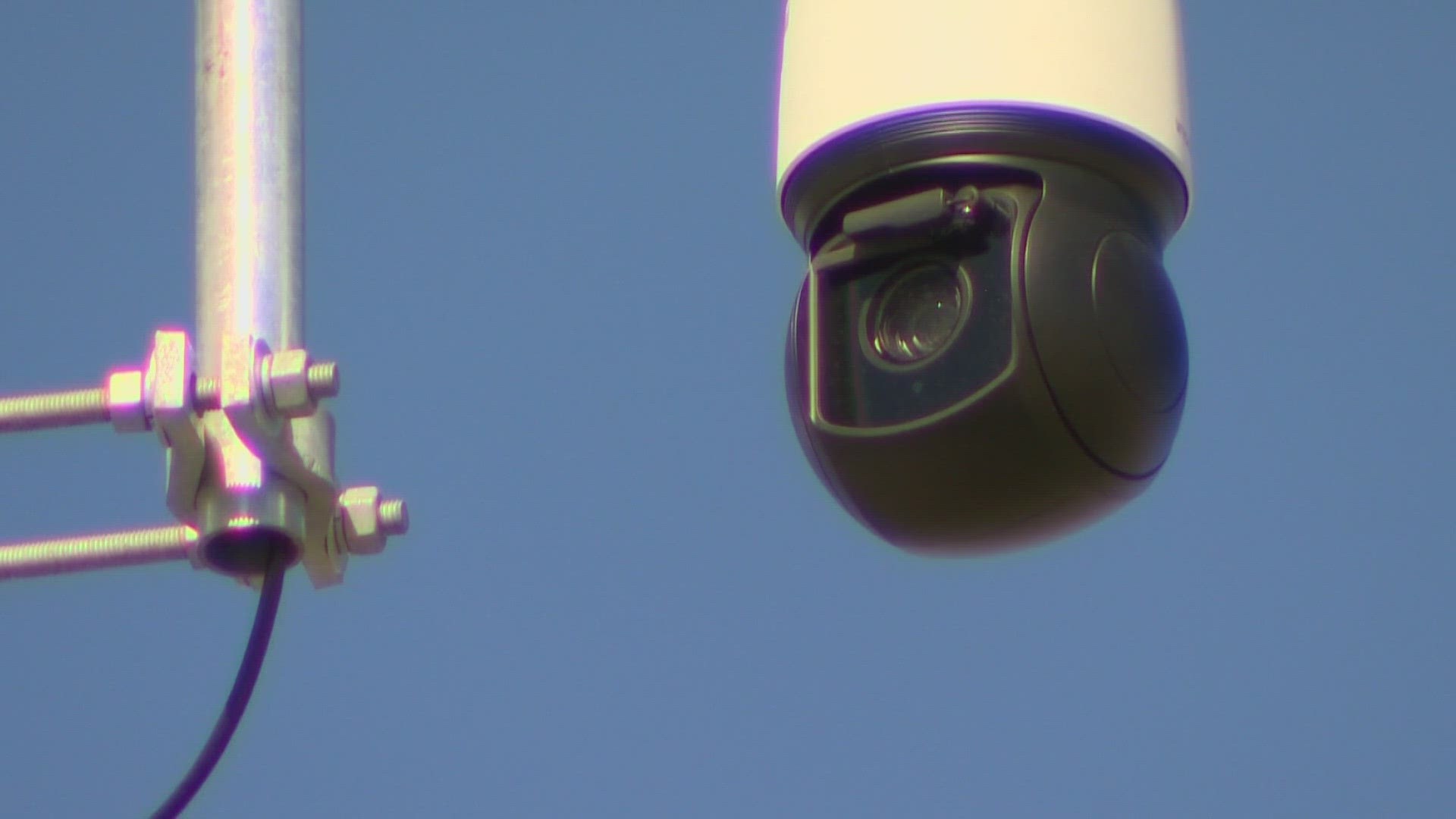ELLENSBURG, Wash. — New cameras hooked to cell towers in wide-reaching areas across Washington are using artificial intelligence to spot fires when they spark and help crews attack them faster.
The Washington Department of Natural Resources (WADNR) is conducting a pilot program with cameras from startup Pano AI that transmit images using 5G, in most cases from T-Mobile towers. The pilot was funded through House Bill 1168, which supported wildfire prevention and response.
Angie Lane, plans and information assistant division manager with WADNR, has been receiving texts with images from the cameras. With night vision capabilities, the Aeneas Mountain cameras spotted a fire moving in from Canada this season - giving WADNR a head start.
"We've been seeing quite a bit actually, we get alerts probably five, six a day from different cameras we've already got up and running," Lane said. "We can see smoke and we can see flames and at night they have an infrared capability so you can kind of see the smoke and detect a little of the heat as well."
In the past, WADNR usually would have had to rely on someone calling in smoke over a remote area. Then, WADNR personnel would have to check it out in person. These cameras allow WADNR to remotely see a 360 view of the area and learn more about the fire before deciding how to respond.
"When we get really hot and heavy into fire season, there's a lot of resource competition, so you do need to be smart about where you're putting resources, prioritizing where you put them, and again going back to type, what type is essential for that fire," Lane said. "If you can see where a fire is, you'll know where not to put crews and things like that, you can communicate more effectively to those crews and resources that are going to the incident, what they're going to be facing there, so they can brace themselves and position themselves in a more safe environment."
WADNR has deployed nine cameras, with 12 more planned to be installed by next summer. At this point, it is a pilot project.
Wildfire detection start-up Pano AI said the technology was developed with the goal of faster detection and response.
"We do that by mounting cameras on mountaintop locations, by scanning the landscape using artificial intelligence, and by pushing out alerts with critical information about the fire to first responders, so they have the information they need to go contain that fire while it's still small," said Sonia Kastner, Pano AI CEO and co-founder. "The AI we use is similar to the type of AI that might be used in say, a home security camera or in a self-driving car. We train a model with images of smoke and images of not smoke and we train it to look for those early wisps of smoke as they form."
Kastner said Pano AI has been deployed for three fire seasons in six states.
"To be able to harness technology all of us can take for granted and build a tool that we can see is really making a difference," Kastner said.

